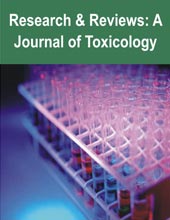
Suresh Kumar

D.varun

N.V.priya Rekha

K.Hemanth
Abstract
The root of Polialthia Longifolia was selected for the evaluation of antidiabetic potential in
STZ-nicotinamide induced diabetic rat model.The root extract was extracted by hot percolation using
ethanol as a solvent in soxhlet apparatus and the preliminary phytochemical screening was performed
and it shows that the ethanolic root extract of Polialthia Longifolia contains alkaloids, glycosides,
flavonoids and tannins.
Safety profile is essential for the drugs obtained from the plant origin. The level of toxicity can be
evaluated by toxicological studies. From the results it was concluded that the ethanolic root extract of
Polialthia Longifolia showed significant anti diabetic activity in a dose dependant manner compared to
the standard drug glibenclamide.
The result also showed significant decrease in the liver Alkaline phosphatase(ALP), Aspartate amino
transferase(AST), Alanine amino transferase(ALT), serum urea level, cholesterol, triglycerides, VLDL
and LDL was in STZ-nicotinamide induced diabetic animals when compared to control group. It is
concluded that ethanolic root extract of Polialthia Longifolia showed significant effect in STZ-
2 nicotinamide induced diabetic rats. Further studies are necessary to examine the underlying mechanism
of hypoglycemic effect and to isolate the active compound (s) responsible for antidiabetic activities.
Keywords: Anti Diabetic Activity, Ethanolic Root Extract, Polialthia Longifolia, Streptozotocin, Nicotinamide
References
1. Patel DK, Kumar R, Prasad SK, Sairam K, Hemalatha S. Antidiabetic and in vitro antioxidant
potential of Hybanthus enneaspermus (Linn) F. Muell in streptozotocin-induced diabetic rats. Asian Pac
J Trop Biomed. 2011;1(4):316–322.
2. Patel DK, Kumar R, Prasad SK, Hemalatha S. Pedalium murex Linn (Pedaliaceae) fruits: a
comparative antioxidant activity of its different fractions. Asian Pac J Trop Biomed.
2011;1(5):395–400.
3. Ponnusamy S, Ravindran R, Zinjarde S, Bhargava S, Kumar AR. Evaluation of traditional Indian
antidiabetic medicinal plants for human pancreatic amylase inhibitory effect in vitro. Evid Based
Complement Alternat Med. 2011;2011:515647.
4. Li WL, Zheng HC, Bukuru J, De Kimpe N. Natural medicines used in the traditional Chinese
medical system for therapy of diabetes mellitus. J Ethnopharmacol. 2004;92(1):1–21.
5. Sy GY, Cissé A, Nongonierma RB, Sarr M, Mbodj NA, Faye B. Hypoglycaemic and antidiabetic
activity of acetonic extract of Vernonia colorata leaves in normoglycaemic and alloxan-induced
diabetic rats. J Ethnopharmacol. 2005;98(1–2):171–175.
6. Saxena A, Vikram NK. Role of selected Indian plants in management of type 2 diabetes: a review. J
Altern Complement Med. 2004;10(2):369–378.
7. Lee HS. Rat lens aldose reductase inhibitory activities of Coptis japonica root-derived isoquinoline
alkaloids. J Agric Food Chem. 2002;50(24):7013–7026.
8. Jung M, Park M, Lee HC, Kang YH, Kang ES, Kim SK. Antidiabetic agents from medicinal plants.
Curr Med Chem. 2006;13(10):1203–1218.
9. Malviya N, Jain S, Malviya S. Antidiabetic potential of medicinal plants. Acta Pol Pharm.
2010;67(2):113–118.

Research & Reviews: A Journal of Toxicology
| Volume | |
| Received | February 8, 2024 |
| Accepted | February 10, 2024 |
| Published | March 30, 2024 |

